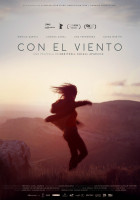Con el viento Filming Locations
Con el viento Filming Locations
Palencia is a city in northern Spain. Dating from the 11th century, San Miguel Church has a Romanesque apse and Gothic facade. Palencia Cathedral has a Gothic exterior and Renaissance altarpiece with paintings by Juan de Flandes. Cristo del Otero is a huge post-cubist statue of Christ by Victorio Macho, who is buried in the chapel below. The Museo de Palencia has Paleolithic artifacts, Roman mosaics and sacred art.
Burgos, a provincial capital in Spain’s autonomous community of Castile and León, is marked by its intact medieval architecture. Its most recognizable landmark is the French Gothic Cathedral of St. Mary, whose 3 main doorways are flanked by ornamented bell towers. Inside is the Chapel of Condestable, decorated with figures of saints, and the tomb of El Cid (Rodrigo Díaz de Vivar), the 11th-century military commander.
Buenos Aires is Argentina’s big, cosmopolitan capital city. Its center is the Plaza de Mayo, lined with stately 19th-century buildings including Casa Rosada, the iconic, balconied presidential palace. Other major attractions include Teatro Colón, a grand 1908 opera house with nearly 2,500 seats, and the modern MALBA museum, displaying Latin American art.
Castile and León is a region of northwestern Spain, consisting predominantly of a high plateau ringed by mountains. Salamanca is known for its 12th-century university, Renaissance churches and baroque Plaza Mayor. Segovia’s ancient Roman aqueduct has more than 160 arches, and the hilltop Alcázar castle overlooks the city. Ávila is encircled by an 11th-century fortification wall with 82 semicircular towers.
Con el viento (2018)
Mónica, a 47-year old dancer, receives a call from Spain: her father is terminally ill. After 20 years, Mónica must return to the remote village where she was born. When she arrives, her father has already passed away and her mother decides to sell the family home asking Mónica to stay to help her. Winter comes. The perpetual silence, the extreme cold and the difficulty of living with her mother are proving tough for Mónica, who takes refuge in what she knows best: dance. 'Facing the Wind' tells the story of a family unable to communicate. It is indeed a thoughtful and loving portrait of a traditional rural lifestyle, which is beginning to disappear. It's a story about distances. But most of all, 'Facing the Wind' is an inner journey to learn again how to live and love better.

